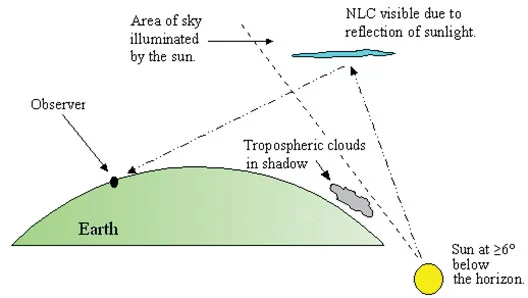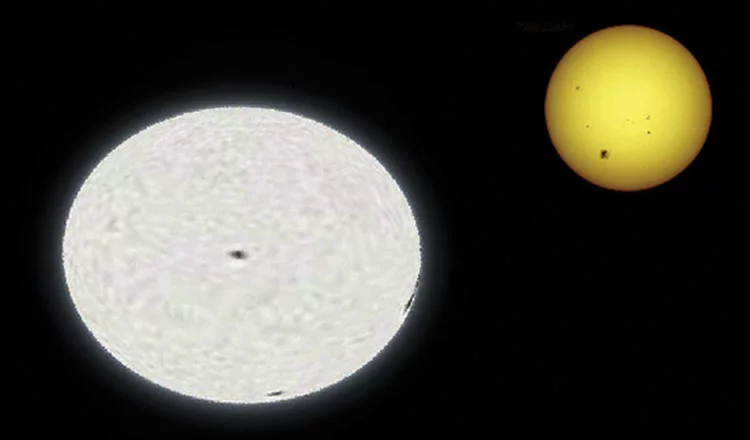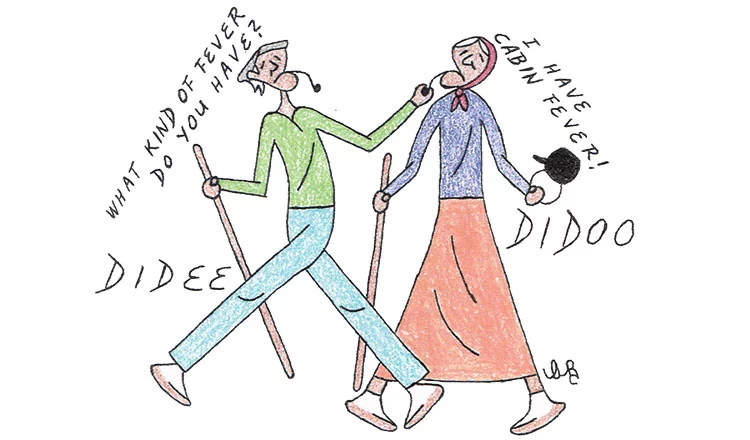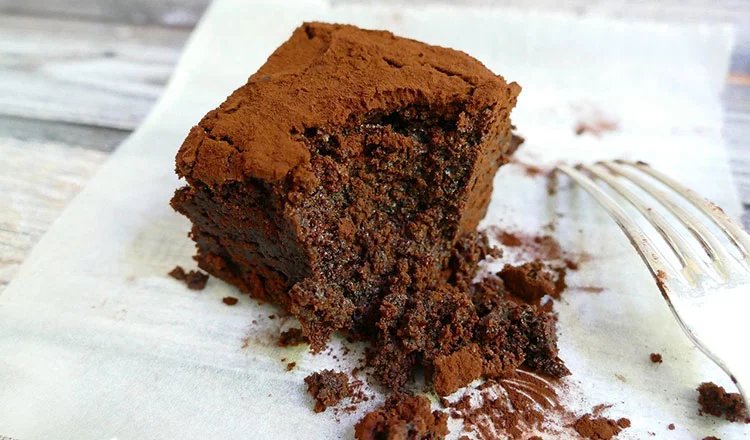Noctilucent clouds near Kakwa, Alberta
Unless you’re dedicated enough to get up in the middle of the night with very good binoculars or a small scope to view the Virgo cluster of galaxies cresting our southern horizon, your stargazing options have greatly diminished. However, this gives me the chance to relate a uniquely northern meteorological phenomena that displays itself in our skies only at this time of year.
The advent of summer solstice brings with it a unique opportunity to view the very highest clouds of our planet. All our “weather clouds,” expressing themselves with such exquisite grandeur in our northern skies, generally form in the troposphere. (up to 14 kilometres above sea level). Noctilucent clouds, however, are denizens of the mesosphere and form at the dizzying altitude of 80 to 85 kilometres. They form almost exclusively in the late spring and early summer months and can only be seen in northern latitudes. (50 to 70 degrees north.)
To view noctilucent clouds, the sun must be well below the horizon, but still shining on the mesosphere where these delicate clouds reside. Daylight is just too overwhelming and drowns them out. With most of the Yukon smack dab in the middle of 50 to 70 degrees latitude, and with our midnight sun tracking just below the horizon for an extended period of time around summer solstice, the perfect geometry for seeing noctilucent clouds is created. The Yukon is most fortuitously placed to view this rare phenomena.
The water vapour that makes up these clouds is exceedingly thin. Astonishingly, the mesosphere contains something around one hundred millionth the moisture content of the air above the Sahara Desert. In the rarified atmosphere of the mesosphere, this limited moisture requires extremely cold temperatures of at least -120 degrees Celsius to form. Counterintuitively, the mesosphere becomes the coldest place on Earth only during the summer months, with temperatures conducive to forming noctilucent clouds.
The ice crystals that make up these clouds are extremely small, at less than 100 nanometers (1/100,000th of a centimetre), which is comparable in size to the particles that make up smoke. Very little of the dust grains that are the nuclei around which these ice crystals form arrive from below. Almost entirely, the dust grains of the mesosphere are from meteorites vaporizing as they smash into our high atmosphere, and comet dust.
As well as appearing very optically bright, noctilucent clouds happen to be very radar reflective. Although this is not well understood, one speculation is that the ice crystals may have a very thin metallic coating of sodium and iron. In the high-speed collisions of incoming meteorites with our atmosphere, sodium and iron atoms are stripped from them and form in a layer just above noctilucent clouds. And when noctilucent clouds are present, this layer of sodium and iron is, perhaps tellingly, depleted. Sodium, in particular, is known to adhere easily to ice crystals at these low temperatures. More studies on this are being conducted as we speak.
And it would seem these elusive clouds may be indicators of climate change. Scientists are just beginning to realise the presence of noctilucent clouds are very dependent on temperature conditions from below. And the increased frequency of noctilucent clouds seems to correlate with the rise of the industrial age. Some scientists think these clouds may be our “miner’s canary” of climate change. Again, more studies are underway.
Whether you feel these clouds are harbingers of doom, or nature’s winsome artwork on the tapestry of sky, don’t miss our unique opportunity to see this rare phenomena. There’s not much one needs to know to observe these rare clouds. Just remember that, because of the extreme altitude of noctilucent clouds, the sun can be up to 16 degrees below the horizon and still illuminate noctilucent clouds. It will be much darker than when viewing the beautiful sunsets of our lower “weather clouds” and the delicate ripples and wispy tendrils of noctilucents will appear unusually bright against the darkening sky. And because of the darker sky, or perhaps that reflective metallic coating of the tiny ice crystals, noctilucents have a distinctive bluish tinge to them. Enjoy!





